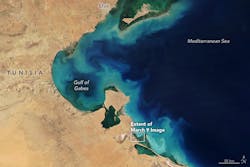Global warming and other climate change effects have been a concern for some time, and NASA has been studying the effects for just as long—from outer space. The agency’s long-running (since 2002) Aqua satellite mission was initially developed as part of a six-year, Earth observing system (EOS) for studying climate change. The satellite, which has far exceeded its design expectations, has six on-board instruments for collecting data about the Earth’s water cycle, including water evaporation from oceans, water vapor in the atmosphere, ice movements, and soil moisture (see figure). The satellite and its data-collecting instruments are expected to continue to operate through the early 2020s.
Among the on-board instruments still transmitting high-quality data are an atmospheric infrared sounder (AIRS) and an advanced microwave sounding unit (AMSU) for measuring the daily averaged temperatures around the Earth. The AMSU, developed by NASA’s Jet Propulsion Laboratories (JPL), is a passive 15-channel radiometer that operates from 15 to 90 GHz. It makes atmospheric temperature measurements from the Earth’s surface to as high as 40 km above the surface.
This image from NASA’s Aqua satellite, which continues to gather atmospheric data to study the effects of climate changes, shows the area around Tunisia.
The two other instruments still transmitting atmospheric data are the moderate resolution imaging spectroradiometer (MODIS) on and the cloud coverage {in the clouds?} and the Earth’s radiant energy system (CERES) unit. The CERES instrument was one of the highest-priority experiments on NASA’s EOS project. Managed by NASA’s Langley Science Directorate and conducted on several additional satellites, the CERES project measures both solar-reflected and Earth-emitted radiation from the top of the atmosphere to the Earth’s surface.
Data from CERES and from previous missions, such as NASA Langley's Earth Radiation Budget Experiment (ERBE), provide insights into the role of clouds and the energy cycle in global climate change. The MODIS instrument contributes to the data used in that analysis.


